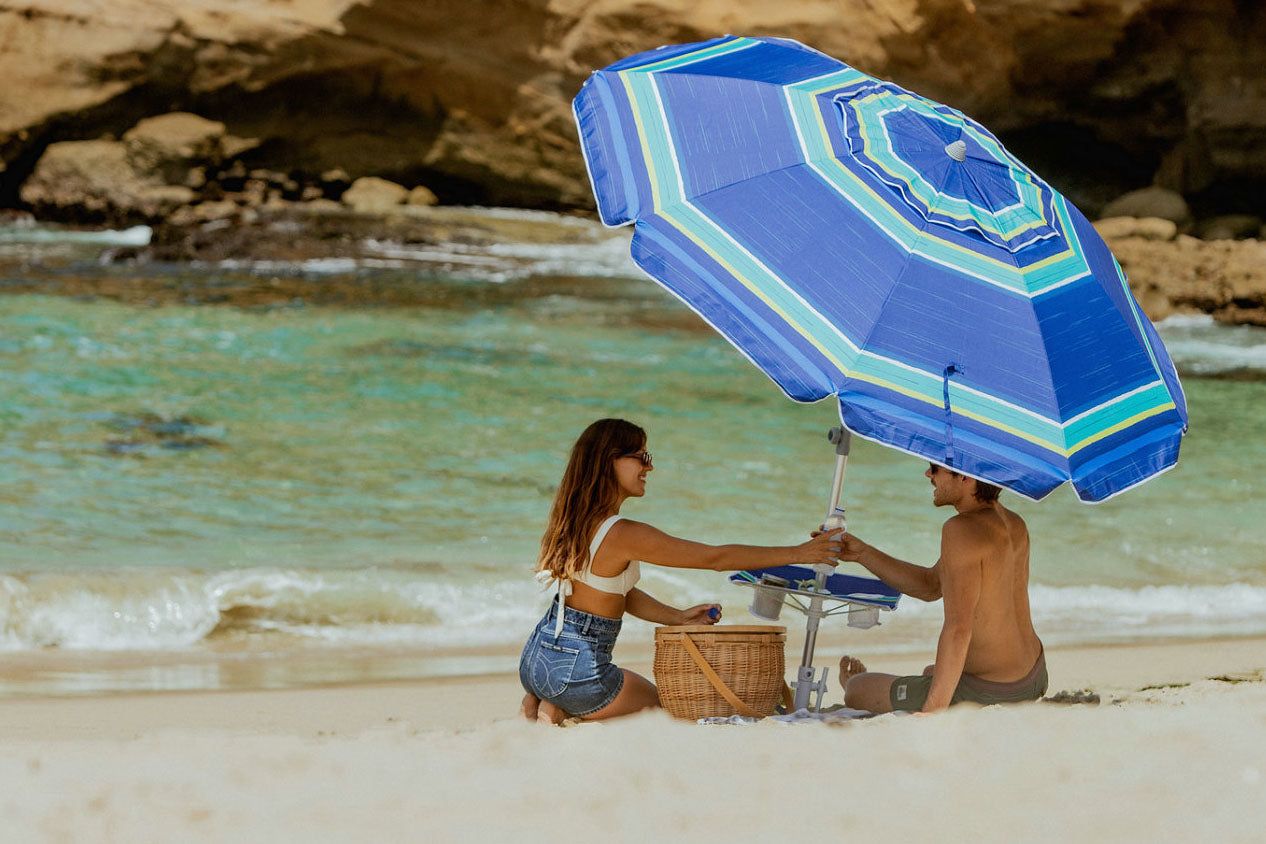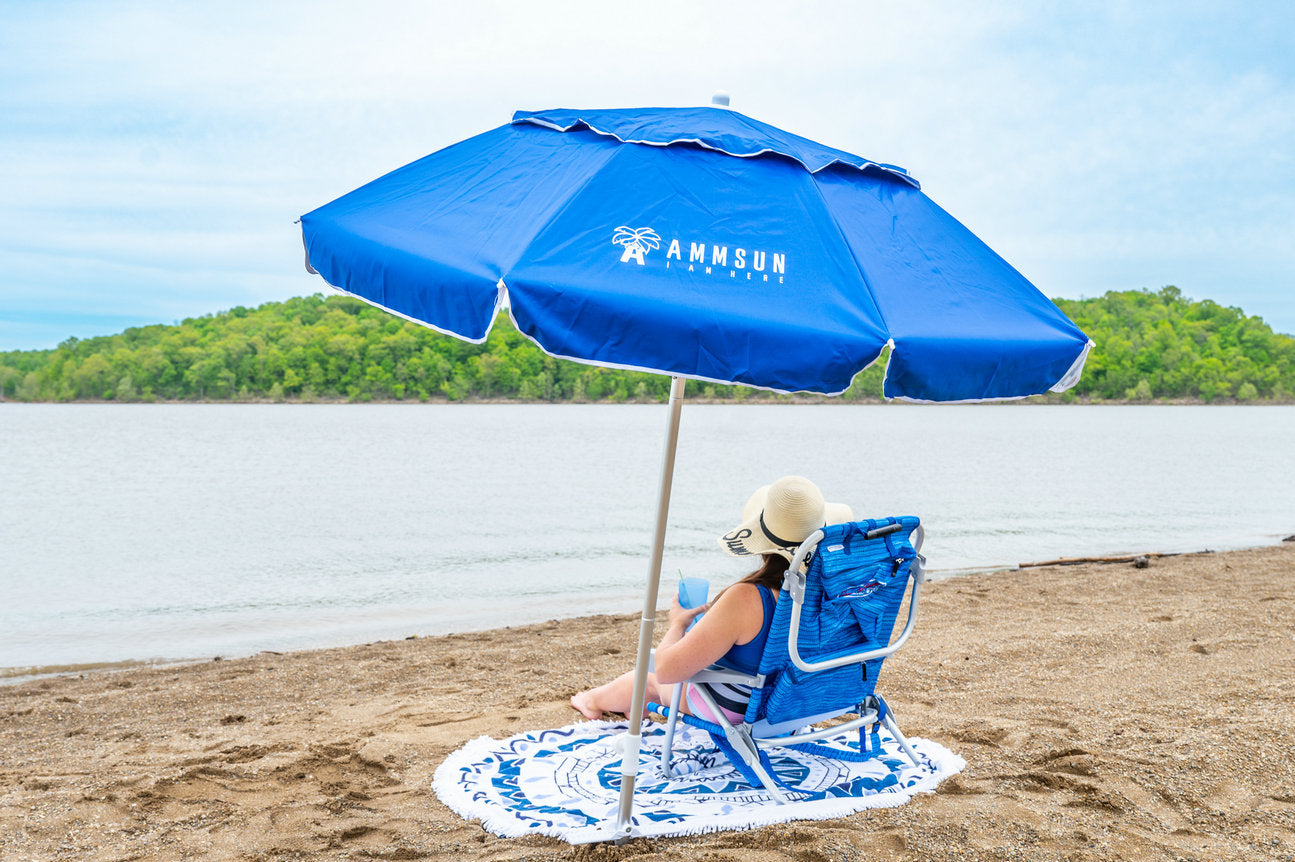Shading Through Time: A History and Evolution of Sun Umbrellas

Shading Through Time: A History and Evolution of Sun Umbrellas
From the sun-kissed shores of the Mediterranean to the tropical paradises of the Caribbean, sun umbrellas have long been an iconic symbol of vacation culture and leisure. These elegant and practical accessories not only provide respite from the scorching sun but also exude a sense of style and sophistication. Let’s embark on a journey through the fascinating history of sun umbrellas.
Symbol of Vacation Culture and Leisure
- A Brief History
The history of the sun umbrella is as old as humanity’s quest for comfort under the sun. Ancient civilizations such as the Chinese, Egyptians, Greeks, and Romans utilized various forms of shade-providing devices to shield themselves from the scorching sun. These early umbrellas were often made from palm leaves, feathers, or fabric stretched over a frame, offering rudimentary protection from the elements.
However, it was not until the 17th century that the umbrella, as we know it today, began to take shape. Originating in China, where it was initially used primarily by nobility, the umbrella gradually spread to Europe, where it became a fashionable accessory among the elite. The functional object transformed into symbols of status and sophistication, adorning the courts of monarchs and nobles. By the 18th century, umbrellas had become a common sight on city streets, not only as protection from rain but also as a shield from the sun’s rays.
- Evolution into a Symbol
As travel and leisure opportunities expanded for people in the 19th and 20th centuries, the sun umbrella became an essential symbol of vacation culture. Whether lounging in the glamorous resorts of the French Riviera or strolling along the bustling boardwalks of Coney Island, beachgoers worldwide sought refuge under these vibrant canopies to relax and unwind.
The sun umbrella soared in popularity during the mid-20th century, coinciding with the surge in mass tourism. Postcards and travel brochures showcased picturesque beach scenes adorned with rows of colorful umbrellas, enticing travelers to break free from the routine of daily life and embrace the leisurely atmosphere of vacation.
- Iconic Imagery
Think of a picturesque beach scene, where a collection of sun umbrellas stands like colorful guardians shielding against the relentless glare of the sun. Their orderly arrangement against the backdrop of rolling waves and golden sands creates an iconic image that instantly transports us to a realm of leisure and serenity.
From vintage postcards to modern advertisements, sun umbrellas often steal the spotlight, stirring feelings of nostalgia and yearning for carefree days spent under the sun. They’ve become a staple of popular culture, symbolizing relaxation and escapism in numerous films, novels, and works of art.
Design and Material Advancements
- Origins
The origin of the umbrella can be traced back to ancient China, where it emerged around 4,000 years ago. Initially designed as a shield against the sun rather than the rain, it served as a symbol of power and prestige, particularly among the ruling class. Crafted from bamboo canes adorned with oiled paper or palm leaves, these early umbrellas were more akin to portable awnings, carried by servants to provide shade for the elite. Innovations such as waterproof coatings and collapsible mechanisms further enhanced the umbrella’s functionality, cementing its status as both a practical tool and a marker of social standing. In this way, the umbrella not only shielded its owner from the elements but also elevated their presence, underscoring the link between protection, privilege, and prestige in ancient Chinese society.
- Asian Influence
Other Asian cultures also made significant contributions to the evolution of the umbrella. In Japan, for example, traditional paper parasols known as "wagasa" became emblematic of elegance and refinement, often featuring intricate designs and vibrant colors. These parasols were not only practical accessories for shielding against the sun but also served as fashion statements and symbols of traditional Japanese aesthetics. Similarly, in countries like India and Thailand, elaborate handcrafted umbrellas adorned with ornate patterns and motifs became synonymous with ceremonial occasions and religious rituals, symbolizing prosperity and spirituality. Across Asia, the umbrella transcended its practical function to become a canvas for artistic expression, cultural identity, and traditional craftsmanship.
- Medieval Innovations
During the Middle Ages, sun umbrellas evolved in design. In Europe, parasols—derived from the Latin words “para” (shield) and “sol” (sun)—became fashionable accessories among nobility and clergy. European artisans began experimenting with sturdier materials such as whalebone and wood for the umbrella’s frame, while fabric options expanded to include durable textiles like canvas, silk and velvet. These advancements not only enhanced the umbrella’s durability but also allowed for more intricate designs and decorations. However, they were primarily symbols of status and prestige rather than practical sun protection tools.
- Industrial Revolution
The advent of the Industrial Revolution in the 18th century marked a turning point in sun umbrella manufacturing. With the mechanization of production, umbrellas became more accessible to the general population, no longer limited to the affluent few. Innovations in materials, such as the introduction of steel ribs and waterproof synthetic fabrics like polyester, further improved the durability and functionality of umbrellas. This period also saw the rise of umbrella factories, where skilled workers utilized machinery to streamline production and meet growing demand. As cities expanded and urban life flourished, umbrellas became indispensable accessories for navigating bustling streets and unpredictable weather conditions.
- Victorian Elegance
The Victorian era saw the sun umbrella transition from a practical necessity to a fashionable accessory. Elaborate designs featuring ornate ivory or carved handles, intricate lacework, and embroidered canopies became popular among the upper classes. Women’s parasols, in particular, were embellished with delicate lace, frills, and tassels, reflecting the prevailing aesthetic of the time. Also, the Victorian obsession with etiquette and propriety extended to umbrella culture, with elaborate rituals surrounding their use, such as the proper way to open and close an umbrella in public.
- Modern-Day Beach Umbrellas
In the 20th and 21st centuries, advancements in materials science and engineering led to the development of lightweight, collapsible umbrellas that could be easily carried and stored. Aluminum and fiberglass replaced steel, reducing weight without compromising strength. High-tech fabrics such as UV-resistant polyester and nylon offered superior sun protection while remaining breathable and water-resistant. Contemporary sun umbrellas come in a myriad of designs, from compact foldable models for urban commuters to large, beach umbrellas equipped with sand anchors for seaside lounging. Specialized features such as tilting mechanisms, wind vents, and built-in UV protection further enhance their functionality and versatility.
Future Style for Beach: AMMSUN Beach Umbrella With Table

- Built-in Table Tray
AMMSUN Beach Umbrella takes beach comfort to a whole new level with its innovative built-in table tray. Imagine this: lounging under the shade, sipping on a cool drink, and having your favorite snacks conveniently placed right beside you, all without worrying about them getting sandy or lost in the shuffle. This brilliant feature, covered by U.S. utility patent No. 9,706,834, ensures that your beach experience is not just relaxing but also incredibly organized.

- Superior Sun Protection
Basking in the sun’s warmth at the beach is one of life’s simple pleasures, but it’s essential to do so responsibly. Featuring UPF 50+ UV protection, this umbrella acts as a powerful barrier against harmful UV radiation, blocking out an impressive 98% of those damaging rays. Whether you’re soaking up the sun’s rays by the water or indulging in a leisurely picnic on the sandy shores, you can unwind with peace of mind, knowing that you and your loved ones are safely shielded from the sun’s potential harm.
- Sturdy Construction
Crafted with durability in mind, the AMMSUN Beach Umbrella is built to withstand the rigors of beach life. Eight strong fiberglass ribs and a sturdy aluminum pole ensure stability, even on windy days. The umbrella’s air-vent design facilitates air flow, preventing it from turning into a parachute on breezy beach days.
- Adjustable Height and Two-Way Tilting Mechanism
Versatility is key when it comes to beach gear, and this umbrella delivers. With height adjustment options and a two-way tilting mechanism, you can easily customize your shade to suit your preferences throughout the day. Whether you’re sitting upright, reclining in a beach chair, or lying on a blanket, this umbrella adapts to your needs.
- Portability and Ease of Transport
Gone are the days of struggling with bulky beach equipment. Designed with portability in mind, it comes complete with a convenient carrying bag and a separate sand anchor, ensuring effortless transportation wherever your beach day takes you. Simply sling it over your shoulder and head to your favorite beach spot without hassle.

- Available Options
When it comes to personalizing your beach experience, AMMSUN Beach Umbrella offers an array of options to suit your preferences. With sizes available in both 6.5 ft and 7 ft, it caters to different preferences and needs. The umbrella with table also comes in a variety of design patterns, ensuring that you can select a style that not only complements your taste but also adds a touch of personality to your beach ensemble.




Comments